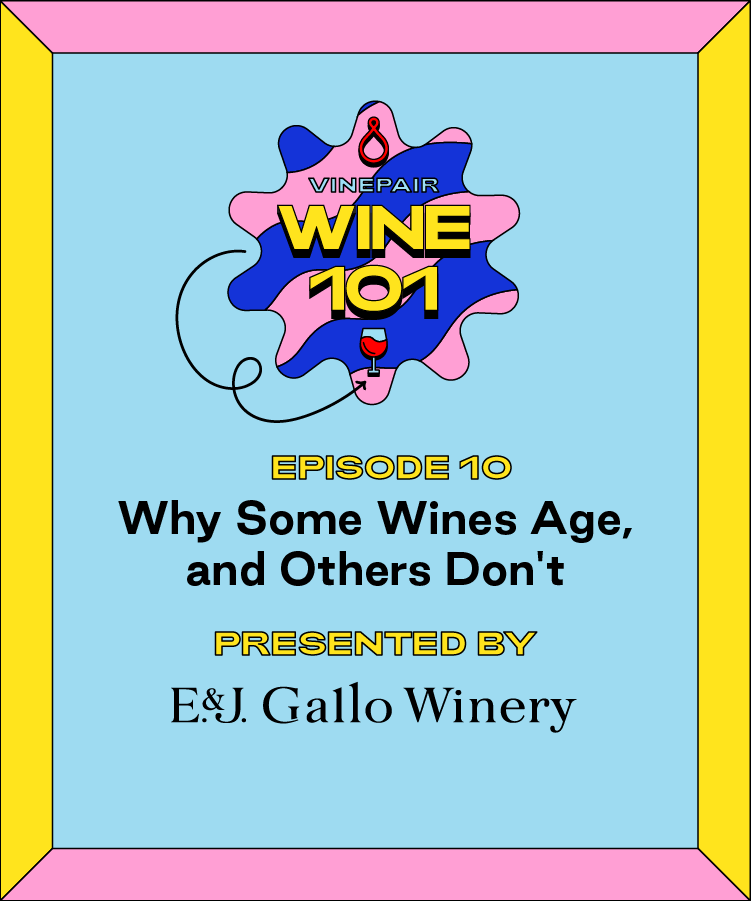
Inspired by one of VinePair’s most popular site sections, the Wine 101 podcast takes an educational, easy-to-digest look into the world of wine. This week’s episode is brought to you by E. and J. Gallo Winery, which exists to serve life’s most joyful and memorable moments. From very humble beginnings, the hallmark of E. and J. Gallo has been an unwavering commitment to making quality wine for all consumers to enjoy. Whether it’s getting Barefoot and having a great time, making every day sparkle with La Marca Prosecco, or continuing a legacy with Louis Martini in Napa, E. and J. Gallo is here to welcome consumers into the category, to make it easier to enjoy wines, and to capture attention in the moments that matter.
Welcome back to Wine 101. In this podcast episode, VinePair tastings director Keith Beavers takes a look at wine aging, what it is, how it works, and examples of wines that benefit from it. As Beavers explains, when a wine is made with “ageability,” it often becomes increasingly complex with the more time it spends in the bottle. This especially includes red wines from certain regions like Bordeaux, Burgundy, and Chianti: Many of these wines are made to age.
Over many years, tannins and textures soften, leaving aged wines with refined and often improved qualities over their younger selves.
Beavers notes that, despite the existence of many age-worthy reds, the majority of wines on the market aren’t meant for extensive aging. Most wines are intended for immediate consumption, or within two to three years of purchase. Boxed wines, branded wines, pink wines, and Beaujolais Nouveau wines fall into this category. Furthermore, the white wine category, as a whole, isn’t typically made for aging, with some exceptions. In this episode, Beavers points out why this is true, as well as why the aging of white wine can be somewhat of a mystery.
Follow Keith Beavers on Instagram
